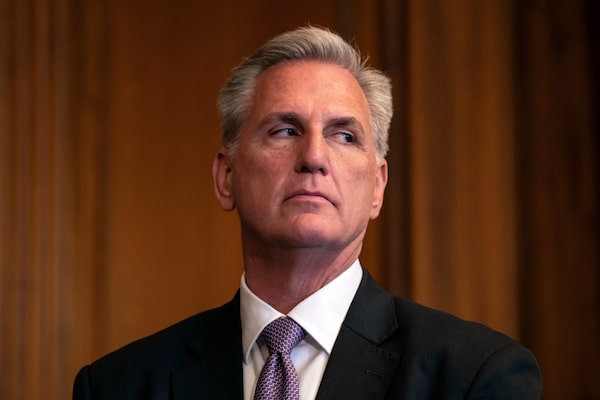
House Speaker Kevin McCarthy, of Calif., is in negotiations with the White House on raising the debt ceiling.Nathan Howard/The Associated Press
John Rapley is a political economist at the University of Cambridge and managing director of Seaford Macro.
Even though the U.S. government may be just weeks away from an economic catastrophe, you’d be hard-pressed to find anyone on Wall Street much bothered about it. Although the White House is playing up the dangers of flirting with the fast-approaching “X-date” when the government will run out of money if the legislative mechanism of the so-called debt ceiling is not raised, this is typically dismissed as a bit of posturing to raise pressure on Congressional Republicans. Most of the financial sector seems to be taking a meh attitude – they’ve been here before, and it always gets sorted in the end.
But the current backdrop differs considerably from earlier episodes of debt-ceiling standoff, both in terms of macroeconomic conditions and the fraught politics of the moment. Ironically, this current complacency could be the very thing which causes something dangerous to happen, with nobody making serious preparations for the stormy seas that might lie ahead.
If the June 1 deadline passes and the debt ceiling has still not been raised, the likely immediate scenario is that government will be forced to drastically cut its spending, and in the current economy that will likely cause a recession. The resulting impact on the world could be disastrous.
Created in 1917, ironically to augment the federal government’s flexibility in raising loans, the debt limit places an upper bound on government borrowing, after which the federal government must obtain the permission of Congress to raise it. Since we live in an inflationary world, the government’s nominal debt increases, even when it’s coming down as a share of spending. That means the government must repeatedly return to Congress for permission to issue new debt.
Keller: The U.S. needs higher taxes. Hear me out
For most of the debt limit’s history, that was a relatively uncontroversial process. That changed in 1995, when House Speaker Newt Gingrich weaponized it in his battle with the Clinton administration. Ever since, whenever a Democratic president faced a Republican Congress, the latter has used its authority as a backdoor way to force the government to cut spending. But even if these games of chicken make the United States look increasingly dysfunctional, if not downright silly, the matter almost always ends in some form of compromise.
So people can be forgiven for saying they’ve seen this rodeo before. Anyhow, they know that the government won’t actually default on its debt. The administration has a plan in place whereby it will prioritize bond payments as revenue comes in. As a result, the U.S.’s reputation as the world’s safest creditor, which gives it the benefit of low interest rates and an endless supply of willing creditors, will be safeguarded.
But that’s not to say there are no risks at all. With the priority on bond payments, government spending will be cut. That is what Congressional Republicans want to happen – they’ll happily raise the ceiling to cut taxes, as they did under former president Donald Trump, but they hate doing it to support spending by Democratic governments.
However, while the government will have to trim its outlays, Congress won’t get a say in how this happens. And the effects on the economy could be severe. Because government spending acts as a stabilizer, smoothing out the ebb and flow of business cycles, its sudden curtailment would most likely induce a recession. Moody’s Analytics estimates that even a week-long standoff could tip the American economy over the edge.
This moment is different from before. In 2011, when the last big showdown occurred, inflation was low and unemployment high, and so the Fed was able to lean on its employment mandate to loosen monetary policy. But as we know all too well, with the U.S. labour market tight and inflation stubbornly high, it doesn’t have that kind of leeway now. A lurch into recession won’t necessarily bring the U.S. Federal Reserve cavalry to the rescue, at least not immediately.
Moreover, because Republicans have only a slender minority in the House of Representatives, House Speaker Kevin McCarthy is beholden to his far-right flank, some of whom give the impression they might even welcome a collapse. In the worst-case scenario, with the Fed’s hands tied, Congress triggers another “TARP moment” – a reference to the day in 2008 that, in the depths of the financial crisis, Congress voted down a rescue package for the banks and markets crashed.
With Mr. Trump now calling for Republicans to stand firm and force a debt default, Mr. McCarthy may struggle to deliver a timely compromise. Were a standoff to linger for more than a matter of days, credit agencies could downgrade U.S. debt, as they did in 2011. This would then spread to all debt linked to U.S. bonds, like mortgage loans. Interest rates could rise, worsening any recession that resulted from a standoff.
So watch this space, as they say. The U.S. economy remains fundamentally healthy, with employment strong and spending holding up. But with savings running down and confidence declining, it’s also at a delicate point. The tension will likely keep rising.